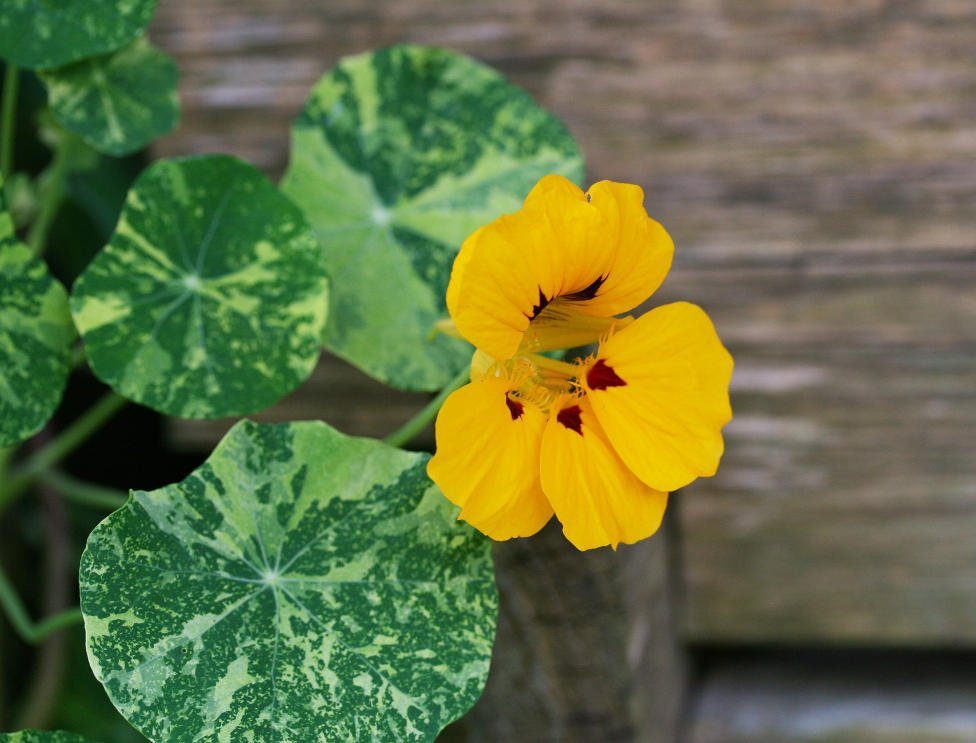Nasturtiums are a delightful addition to any garden, known for their vibrant flowers and edible leaves, flowers, and seeds. Growing nasturtiums in containers is a fantastic way to enjoy these versatile plants, especially if you have limited garden space. This guide will cover everything you need to know about growing nasturtiums in containers, from their basic needs to growing techniques, problem-solving, and more.
Basic Needs: Preparing Your Container and Soil
Nasturtiums thrive in well-draining soil and prefer a sunny location. Choose a container that is at least 25 cm deep and has adequate drainage holes. The material of the container can vary, but terracotta or plastic pots are popular choices.
Fill your container with a high-quality potting mix that includes organic matter. Nasturtiums do well in poorer soils, so avoid using overly rich compost or fertilizers, which can result in lush foliage but fewer flowers. A slightly acidic to neutral pH, around 6.0 to 7.0, is ideal for these plants. Place the container in a spot where it will receive at least six hours of direct sunlight each day.
Growing Techniques: Planting and Caring for Nasturtiums
You can start nasturtiums from seeds or purchase seedlings from a garden centre. If you are planting seeds, sow them directly into the container. Plant the seeds about 1.5 cm deep and space them 10 to 15 cm apart. Water the soil thoroughly after planting to help the seeds settle in.
Nasturtiums are relatively low-maintenance. Water them consistently, keeping the soil evenly moist but not waterlogged. During hot weather, you may need to water more frequently. However, let the top 2.5 cm of soil dry out between waterings to prevent root rot.
Nasturtiums do not require frequent fertilization. Over-fertilizing can lead to excessive foliage growth at the expense of flowers. A light feeding with a balanced, water-soluble fertilizer once or twice during the growing season is sufficient.
Problem-Solving: Addressing Common Issues
Nasturtiums are generally hardy plants, but they can encounter a few issues. One common problem is aphid infestation. If you notice aphids on your plants, you can spray them off with a strong jet of water or use insecticidal soap. Introducing beneficial insects like ladybugs can also help control aphid populations.
Powdery mildew is another potential issue, particularly in humid conditions. This fungal disease appears as a white, powdery coating on the leaves. To prevent powdery mildew, ensure good air circulation around your plants and avoid overhead watering. If mildew appears, remove affected leaves and consider using a fungicide.
Harvesting and Storage: Making the Most of Your Nasturtiums
One of the joys of growing nasturtiums is that all parts of the plant are edible. The flowers, leaves, and seeds can be harvested and used in various culinary dishes. Harvest the flowers when they are fully open and the leaves when they are young and tender. Rinse them thoroughly before use.
Nasturtium seeds can be harvested and used as a caper substitute. Allow the seed pods to mature on the plant until they are plump and firm. Pick them and rinse them well, then use fresh or preserve them in vinegar.
If you want to save seeds for the next growing season, let some seed pods dry on the plant. Once they are dry and brown, collect the seeds and store them in a cool, dry place.
Tips: Enhancing Your Nasturtium Experience
Select the right variety for your container garden. Dwarf or trailing varieties are ideal for container gardening. Some popular choices include ‘Alaska’ with its variegated foliage, ‘Jewel Mix’ with its bright, jewel-toned flowers, and ‘Empress of India’ with its striking dark foliage and deep red flowers.
Regularly deadhead spent flowers to encourage continuous blooming throughout the season. This simple practice helps to direct the plant’s energy toward producing more flowers rather than seeds.
Consider growing nasturtiums with other companion plants. They can help deter pests and add beauty to your container garden. Nasturtiums pair well with vegetables like tomatoes and beans, as well as herbs like basil and chives.
Enjoying the Beauty and Benefits of Container-Grown Nasturtiums
Growing nasturtiums in containers is a rewarding and enjoyable gardening project. These versatile plants are not only beautiful but also useful in the kitchen and beneficial in the garden. By understanding their basic needs, employing effective growing techniques, and addressing common challenges, you can successfully cultivate a vibrant display of nasturtiums. With a little care and attention, your container-grown nasturtiums will thrive, providing you with stunning flowers and tasty, edible parts throughout the growing season.

